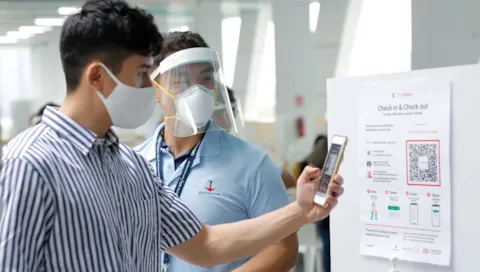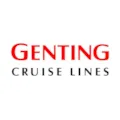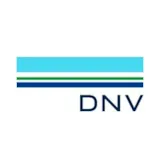Get regular cruise vessel insights!
Don’t be left out. Join the many others and sign up today to receive the latest insights.
Sign up!
In a new interview series, Maritime Impact shares the best practices from different operators on how they resumed cruising safely for passengers and crew. Genting Cruise Lines are the first on deck and Captain Håvard Ramsøy explains how CIP-M certification can help with structured processes also in the event of a Covid-19 case on board.


Captain Håvard Ramsøy, Vice President, Marine Operations and Safety at Genting Cruise Lines is a Master Mariner. He started his career in 1997 as a senior marine officer on board various cruise ships belonging to Norwegian Cruise Lines. He was subsequently involved in different newbuilding projects before becoming captain – a stint lasting six years. In 2013 he joined Star Cruises as Vice President Nautical and later assumed the position of Vice President, Marine Operations and Safety, at Genting Cruise Lines in 2018.
Capt. Ramsøy, reflecting on the pilot cruises in South East Asia, what are some of the main learning points for Dream Cruises as an early mover?

The main learning point is that you need to be flexible regarding national requirements. The risk level varies from country to country and is very fluid, too. Also, we learned that all logistics supporting a cruise ship, from bringing in spare parts to consumables, food supply and flying in crew members, have been extremely difficult. Supply chains do not work as well as they did before the pandemic. Everything is more complex, takes longer, and you have to be well prepared. For example, if one crew member is going to sign on in Singapore, he or she must quarantine for five weeks according to current regulations – two weeks in the home country and three weeks in Singapore. And within these five weeks, multiple testing is conducted to make sure the crew member is Covid-19 negative and vaccinated. If one of our staff has to go home at short notice for any kind of emergency, a replacement cannot be made overnight. But after having adapted to these special circumstances, logistics have worked out quite smoothly for us.

Can you elaborate on some of the steps of the communication you’ve taken to explain the amended cruise product?

It starts with “What can you expect on board?”, including social distancing, capacity controls and everything related to this. The whole communication process begins before boarding the ship, be it through our website, emails, text messages or social media. At the terminals, testing is staggered so passengers know exactly when to show up. It does not help to have good social distancing on board when 1,500 people are in the terminal at the same time. It is also important to have ushers who take care of passengers until they board the vessel as well as proper signage. When our guests step over the gangway, they know well which regulations they need to comply with – all of which are also listed in the on-board app.

You recently experienced the first Covid-positive case on board one of your Singapore cruises, which made headlines. Could you share with us how your team handled this challenging situation?

The passenger who tested positive on board was, in fact, vaccinated and tested negative at the terminal. Obviously, he was asymptomatic. We received a call from the Ministry of Health reporting that he had been in close contact with another Covid-positive case in Singapore. We immediately isolated him and his travel partners and tested them. His PCR test result came back positive, and so we did a couple of confirmation tests. We reported these results back to the Singapore government and immediately initiated a “level red” protocol, meaning all passengers had to go to their cabins, with only the essential crew serving passengers in the cabins, while we returned to Singapore. When we reached Singapore, the protocol required a list of close contacts on the ship to be submitted for contact tracing, so we had that ready upon arrival for submission to the authorities. Everyone was separated such that we could disembark the Covid-positive passenger. At a certain point, the green light to disembark was given for the rest of the ship. Those in close contact with the infected passenger were isolated, disembarked last, and were placed under home surveillance according to Singapore standards.

How did DNV’s Certification in Infection Prevention for the maritime industry (CIP-M) help you in that event?

CIP-M helped us put everything into a good structure, so everybody on the ship and shore knew exactly what to do when the situation arose. We had the shipboard and the shoreside disease committee quickly come together to initiate all plans. The steps each department needed to take were well-defined and clear. For example, there is a list of essential crew. Only they are allowed to work, the rest must go back to their cabins. Thus, there were no questions or confusion among the crew or onshore team. When we returned to port and the government confirmed through another lab test that the passenger was Covid-positive, this also proved that our equipment was accurate. The clear structure of CIP-M including all training and exercises with the team on board and shoreside helped us a lot to cope with this real situation.

Had you conducted drills to prepare for Covid emergency situations?

We have done drills for all kinds of scenarios many times. We have even trained together with authorities in Singapore and Taiwan. Like for any other incident that can happen on board, if you don’t train how to handle a Covid case, you won’t know what to do when it happens. So, when we got the positive case, everybody knew exactly what to do. I think we managed well, which is reflected by the good passenger feedback. Afterwards, management, ship and shore teams came together and went through the whole incident. There’s always something to learn from every emergency event.

What did you learn in that real case?

One of the biggest learning points is that the number of essential crew could have been higher. It was agreed with the authorities to keep it as limited as possible, so most of the crew had to return to their cabins. But the event dragged on and while we arrived in the morning, we couldn’t release everyone until the early evening. So, some people had to stay in their cabins the whole day and we had to serve three to four room-service meals with a very limited crew, who handled everything extremely well. Everybody got their food in a timely manner, but it put a lot of stress on those few crew members that were engaged in that. These are things that we will tweak to make sure that the next time, it will be a little bit easier on everyone.

In addition to new communication measures, testing procedures and safety protocols, which equipment did you change on your vessels to enhance infection prevention and mitigation?

Let’s start with the medical centre and increase in medical staff. We now have a lab with PCR testing equipment and antigen rapid testing on board, so we can mass-test at short notice, including those in close contact with suspected cases. We brought in an extra ventilator and have a small oxygen supply in store. For positive or suspected cases there are dedicated isolation cabins. To prevent any spread of the virus, the ventilated air is not recycled but always 100% fresh. The filters in the air-handling units have been upgraded to a better grade, with HEPA filters added in certain areas. Most of the filters installed in the new Dream-class ships are already of a very good grade and we didn’t have to change them. Additionally, we hand out contact tracing wristbands to crew and passengers to quickly identify close contacts in the event of positive Covid cases detected. We also have a wide range of different sanitizing equipment available. Regular sanitation is done during sailing and full sanitation after every cruise. If we have any suspected or positive cases, we will have additional sanitation.

To the new requirements also belongs the role of infection control officer. What does this person do?

One of the ship’s doctors is appointed with this additional role and is responsible for administration work, government reporting, contact tracing efforts and testing processes. The infection control officer reports to the staff captain who oversees the medical centre. In addition, we have also established a disease committee on board that includes the hotel director, staff captain, chief engineer and doctors. So, if there is a suspected Covid-19 case, the team will quickly meet and discuss the next course of action.

How did you upskill your medical staff and crew to cope with these new regulations and procedures?

The doctors we have in the fleet were engaged in the implementation of all safety measures from the very beginning when the CIP-M came along. They have gone through extensive training together with all other departments. This is not new to them since safety training has always been part of each crew member’s life on board a cruise ship. The training starts well before they board the vessel. While going through quarantine, we have been giving the crew training materials to study, and as soon as they join, they receive more ship-specific training depending on the role they take.

Don’t be left out. Join the many others and sign up today to receive the latest insights.
Sign up!